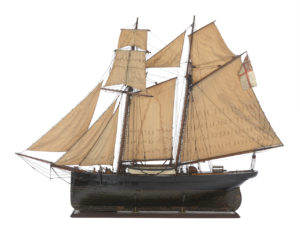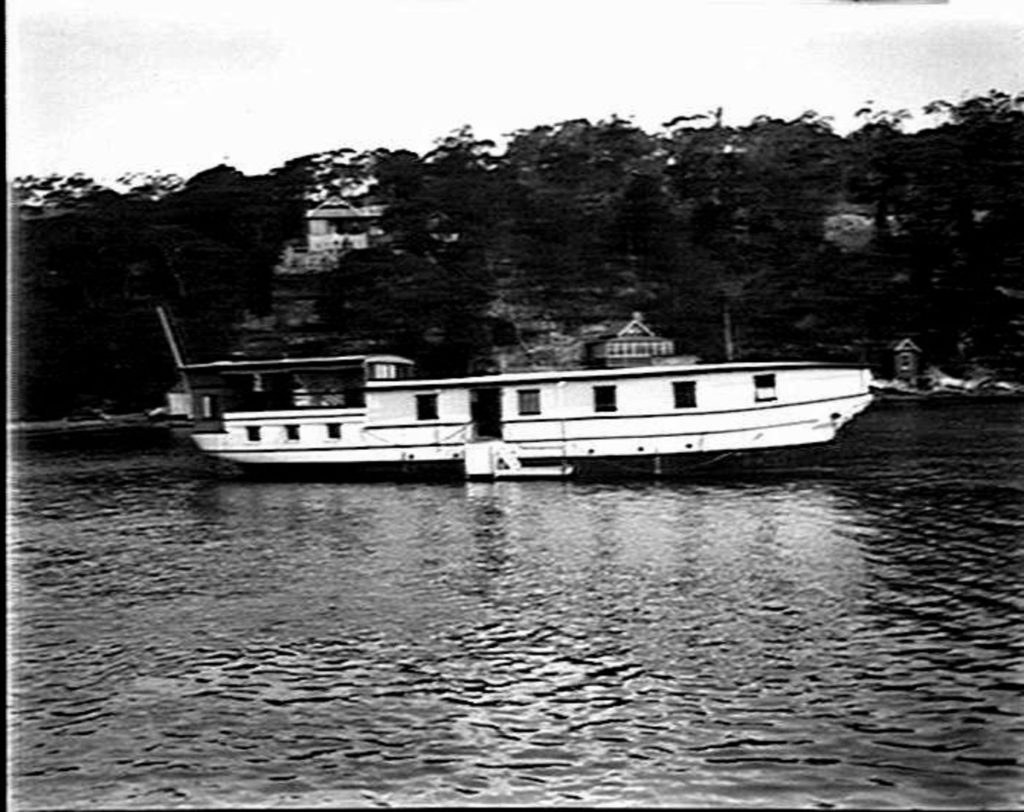- Author
- A.N. Other
- Subjects
- Ship design and development, History - pre-Federation
- Tags
-
- RAN Ships
- None noted.
- Publication
- December 2022 edition of the Naval Historical Review (all rights reserved)
By Walter Burroughs
In recent times Australia could be considered a mecca for the patrol boat industry: from a slow post war start with the Attack class, they were replaced by the Fremantle, Armidale, and Cape classes, and now the aptly named Evolved Cape class. Added to which there have been two series, the Pacific and Guardian classes, which have been liberally provided to our smaller Indo-Pacific neighbours. But where did this all start?
In a contribution on the Attack class Patrol Boats Weatherall (2019) says that between WWII and 2019 the RAN has operated five classes of patrol boats commencing with the Bathurst class, then the Ton, Attack, Fremantle and Armidale-classes. Many would argue that the relatively large Bathursts and Tons do not belong in this list, and surprisingly, it did not include the ubiquitous Fairmile Motor Launches and their smaller cousins the Harbour Defence Motor Launches, a mainstay of patrol forces during WWII.
The Royal Naval Squadron
Whatever the rights and wrongs of the classification of a patrol vessel, the history of the development in Australia stems from the time of the Royal Naval Squadron when it was based on our shores. The following enlightening extract is taken from the London Times dated 30 April 1874:
Owing to the difficulties and dangers of navigation among the islands of the South Pacific, the following steam schooners (actually sailing schooners) belonging to the Royal Navy have been added to the fleet on the Australian Station as tenders to the Pearl, Commodore J G Goodenough, the flagship on that station, for special service in those waters: the Alacrity, Lieut. Commander F W Sanders; the Beagle, Lieut. Commander F S Rendell; the Conflict, Lieut. Commander A R Mansell; the Renard, Lieut. Commander T Suckling; and the Sandfly, Lieut. Commander W B Nowell. They are constructed of a light draft of water to allow of their cruising in and out among the 200 islands in the South Pacific which form a large part of the Australian command.
Design Characteristics
Policing of the scattered poorly charted and relatively unknown Pacific islands presented many problems for the ships of the Australia Station. Accordingly, a decision was made to position a small number of specially designed and equipped ships in the major island groups. The intention was to have a flotilla of five ships from which a vessel would be stationed in each of the following locations: the Bismarck Archipelago and Solomon Islands, Loyalty Islands, Caroline Islands, Marshall and Gilbert Islands, and the Ellice, Samoa and Friendly Islands. While many of the above colonial names have changed, they covered a vast area of the south west Pacific claimed as part of, or under the protection of, the British Empire. A major task was to police and suppress ‘Blackbirding’, a name given to the unscrupulous indenture of Pacific Islanders as labour working Queensland sugar plantations and for the pearling industry in northern Australia. Blackbirding was declared illegal by the British Government in 1868 but the practice continued under licence until 1908.
John Cuthbert – Shipbuilder
John Cuthbert was born in Cork and arrived in Sydney in 1843. As a 28-year-old shipwright he readily established himself in business at a time when the local shipping industry was developing rapidly. His main yard at Millers Point became the principal shipbuilding enterprise in the colony, where he built and refitted numerous vessels, both sailing and steam-driven up to 500 tons. These included the colonial gunship Spitfire, the first naval vessel to be built in the colony. On average he employed 150 tradesmen but this sometimes increased to 400.

RN Maritime Museum Greenwich.
Amongst vessels built by Cuthbert was the schooner-rigged yacht Ethel of 85 tons. When only a few years old she was purchased for the Australian Squadron and overhauled and fitted out by Cuthbert as a model for a new class of patrol vessels. In August 1872 she was commissioned as HMS Alacrity, a tender to the then flagship HMS Clio. Being an ex-yacht, Alacrity had a raked bow and fine lines, meaning her carrying capacity was less than her later sisters with their blunt bows.
On 24 September 1872 Cuthbert was contracted to build four topsail schooners of 120 tons builder’s measurement each, the first vessels to be built in New South Wales for the Imperial Government. Two of the new schooners were ready for launch by November 1872, with the third and fourth underway; the last vessel, Conflict, was handed over in February 1873.
Their overall length was 80 feet (24.4 m) with a hold of 9 feet 6 inches (2.9 m) depth and a beam of 18 feet 6 inches (5.6 m), with a draught of 6 feet (1.8 m). Their hulls reflected the best in colonial construction and materials of the time. Fastened entirely with copper, the vessels were built with ironbark keels, blackbutt and blue gum frames, kauri pine planking and sheathing of Muntz’s metal over chunam (a water-resistant plaster made from quicklime and sand). While not mentioned by Hobbs (2017) it is almost certain that the masts were also of blue gum. Another reference by Purdie (2011) dating back to an original narrative first published in the 1806 and 1807 editions of the Naval Chronicle extols the virtues of New South Wales hardwoods, especially blue gum used in the provision of masts which were used in Porpoiseand a number of other colonial vessels which were found stronger and of lesser circumference than traditional pine masts sourced from eastern America and the Baltic then favoured by the Navy.

These vessels were able to accommodate provisions three officers and 25 men, with storage for provisions for six months. Their main armament was one 12-pounder gun, then well-known in military and naval service, a versatile weapon with a calibre of about four inches (10.16 cm) and a range of about 2000 yards (1829 m). The cost estimate for each ship was not to exceed £25-£35 per ton fully provisioned or about £3000 per vessel. This was below British building costs and without the inconvenience of lengthy and expensive delivery voyages.
The shipyard had given names to these ships, and amusingly they were unofficially named after ladies of the night familiar on the Sydney scene. The Admiralty was having none of this frivolity and renamed the schooners somewhat haphazardly as HM Schooners Beagle, Conflict, Renard and Sandfly with Alacrity retaining her name as the fifth vessel of the Beagle-class.
Operational Service
The Beagles were generally seen as being successful and for their size they had good seakeeping qualities, could remain on station for lengthy periods and were relatively fast, often achieving speeds in excess of 10 knots. When steam replaced sail they became obsolete and their service lives were cut short; all being retired within ten years. A brief summary of their major operations follows:
Alacrity (ex-Ethel) was acquired in 1872 and carried out anti-blackbirding patrols before undertaking hydrographic surveys in Fiji. In 1882 she was sold to the Colony of NSW and converted into a guardship and powder hulk berthed with two other powder hulks in Sydney. This was done as an interim replacement for the powder magazines on Goat Island which were too close to the expanding town centre. Remarkably, Alacrity was still afloat in WWII, being used as an accommodation hulk.
Beagle was launched in December 1872, and following anti-blackbirding patrols was paid off in 1883, initially becoming a fishing trawler and ultimately falling into disuse and laying up in the Yarra.
She was sold to ‘mining speculators’ in July 1891 and, loaded with copious supplies of liquor, she made for Hawaii. Here Customs authorities became suspicious and demanded a handsome bond lest the liquor was sold into the local market. She eventually made Callao in Peru where she was again sold. It was later discovered that the ‘mining speculators’ had defrauded Australian banks of £30,000 (then a vast sum) and had disappeared into South America, never to be seen again.
Sandfly was launched in December 1872, and on her third patrol to the Solomons in September 1878 came under attack by a large number of islanders with a fearsome reputation. After a brief skirmish she managed to escape without casualties. In 1880 Sandfly was tasked with hydrographic surveys in the Solomons under the command of Lieutenant James St Clair Bower, the 27-year-old eldest son of Admiral James Paterson Bower. While ashore surveying Bower and four sailors were attacked and killed by islanders. In reprisal the crew burnt several canoes but were again attacked when another sailor was killed. The Admiralty sent a strong contingent to the islands demanding those responsible be brought to justice. Sandfly was sold out of service in 1883.
Renard was launched in January 1873. During her anti-blackbirding patrols she searched unsuccessfully for the notorious American blackbirder Bully Hayes who for many years terrorised and defrauded his way across the Pacific. In 1877 Hayes was killed by a member of his own crew. This was regarded as ‘good riddance’ and the crew member was not prosecuted.

Conflict was launched in February 1873. As a result of the discovery of a new group of islands off the coast of New Guinea, the Conflict Islands were named after her. On a routine patrol in April 1876 she called at Fremantle and her presence threw into confusion an elaborate conspiracy to free Irish Fenian prisoners from a lifetime of servitude in the penal colony and take them to freedom aboard an American whaler Catalpa. The escape was postponed and successfully executed after Conflict’s departure. She was sold out of service in 1882; in merchant service later that year she was stranded upon a reef in Fiji and became a total loss, but her crew were saved.
Later Developments in Patrol Craft
With few exceptions the earlier patrol craft were replaced by larger steam-driven vessels; by the outbreak of the First World War the newly established RAN had a number of aged ex-colonial ships which could be termed patrol ships. These included the torpedo boats Countess of Hopetoun, Childers, Lonsdale and Nepean and the gunboats Gayunda and Paluma. These were later joined as patrol craft by the captured German colonial vessels Nusa and Sumatra, and by more requisitioned vessels to patrol local and New Guinea waters. These were the tug Alacrity, the ferry Coogee, the coasters Gannet and Mourilyn and the yacht Sleuth.
The Beagle-class patrol craft provided a useful benchmark and were excellent examples of local shipbuilding capabilities. The vessels were versatile and successfully carried out policing duties over vast areas of the south west Pacific. While they were eventually replaced by steam and motor vessels their general characteristics were not seriously challenged for over a century. The introduction of the Beagles and the idea of basing them locally on station is in many ways reflected in recent Defence maritime aid programs to neighbouring countries.
We have now progressed to the much larger Cape and Evolved Cape Classes at over twice the size of the Beagles; Offshore Patrol Vessels are about to join the fleet, and at 80 metres in length and over 1600 tonnes are the size of earlier frigates. Will the circle once again turn to smaller patrol vessels, this time possibly unmanned?
References
Bastock, John, Ships on the Australia Station, Child & Associates, Sydney, 1988.
Gillett, Ross, Australian & New Zealand Warships 1914 – 1945, Doubleday, Sydney, 1987.
Hobbs, Roger, A Shipwright in the Colonies – John Cuthbert 1815-1874, Nautical Association of Australia, Melbourne, 2017.
Pease, Zephaniah Walter, The Catalpa Expedition, G S Anthony, New Bedford, Mass, 1897.
Purdie, Robert, Narrative of the Wreck of HMS Porpoise, Reprinted by Hordern House Rare Books, Sydney, 2011.
Weatherall, Dennis, Attack-class Patrol Boats – Occasional Paper No 51, NHS.
